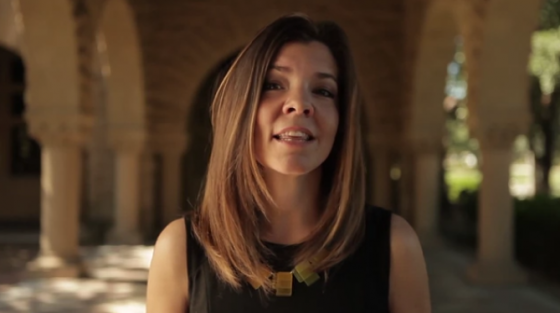After studying innovation in the Hasso Plattner Institute of Design (d.school), the Graduate School of Business, and Stanford’s School of Engineering, I’ve learned that one of the first things journalists need to be experimental is a reason to do so. That’s not as simple as it sounds given the demands of the job (deadlines, accuracy, etc). But when reporters realize a different approach will help their work resonate more with audiences they’re trying to reach, as was the case during a design thinking project I launched at KQED, they’re more driven to generate and try new ideas.
Of course, journalists also need the support of senior leadership for their innovations to take hold and continue. This means creating conditions for fostering and rewarding risk. Some newsrooms may need to emphasize taking bold chances in their guiding visions. Others might need a dedicated experimentation space. Or even daily games to set the tone. A little R & D and feedback can help find the right mix for individual organizations.

Bear launched a design thinking project at KQED, to generate and try new ideas. Photo from Charla Bear.
In order to remain relevant to increasingly diverse and digitally-oriented audiences, all newsrooms need to continuously innovate. For public media, this is especially critical given its mission to reflect and serve its surrounding community. However, developing solutions for public media can also provide viable approaches for other journalism organizations, since these outlets tend to have fewer resources than their for-profit peers.
I also believe fostering innovation improves the optimism and outlooks of individual journalists. This not only raises spirits but enhances an outlet’s quality of work. Empowering staff members who are already in place and eager to try new things contributes to the sustainability of innovation. But a lot of journalists don’t know where to start. That’s why I’m so passionate about this challenge.
Status and next steps
To encourage KQED to continue our redesign efforts, I’m digitizing the Post-it notes from all of our brainstorming sessions. Doing so will allow the team to continue to move, change, and group ideas without losing track of any. It also creates a virtual space for collaboration that can be shared more broadly.
I’m also disseminating my three top tips to help journalism organizations get over the hurdle of not knowing how to start innovating. They are: find inspiration, commit to creativity, and think less, do more. They’re simple, but effective. You can learn more in my JSK video at the top of this post.
I plan to keep prototyping innovative approaches with different public media organizations. In addition to individual stations, my goal is to branch out to associations, such as AIR (The Association of Independents in Radio) and PRNDI (Public Radio News Directors Inc.).
This summer, I also hope to pass along some tips to up-and-coming journalists as a mentor in the Next Generation Radio project @ KUT & UT-Austin. I’d like to test ways to improve college newsrooms, as well as empowering young journalists to become change makers when they land professional jobs.
I also plan to continue designing tangible organizational rituals and tools after diving into these tactics in my most recent d.school class. Keep your eyes peeled for emergency kits for organizational ailments coming your way soon!
Takeaways
One of the most important things I’ve learned is that everyone is capable of being creative if they have the inspiration, tools, and support they need. This is not the domain of a single, vaunted genius. However, creativity looks different from person to person. For some, it takes a visual form. For others, it might be written. Still others might have great conceptual ideas. Another, the clever details.
This is why it’s essential to figure out what talents are in a newsroom, put together teams that compliment each other, and hire people to fill any holes. It’s also why staff at all levels should be included in brainstorming new ideas, not just those perceived as “innovative.”
Charla Bear (@CharlaReports) is an award-winning journalist, designer and university instructor on a mission to make storytelling more game changing, relevant, and audience centered. She’s currently a John S. Knight Fellow at Stanford, one of 20 international journalists selected for the prestigious innovation, leadership, and entrepreneurship program. Her goal is to use cutting edge design methods to infuse public media with more creativity and experimentation.
 This post originally appeared on the blog for John S. Knight Journalism Fellowships at Stanford. The John S. Knight Journalism Fellowships at Stanford foster journalistic innovation, entrepreneurship and leadership. Each year, twenty outstanding individuals from around the world the resources to pursue and test their ideas for improving the quality of news and information reaching the public.
This post originally appeared on the blog for John S. Knight Journalism Fellowships at Stanford. The John S. Knight Journalism Fellowships at Stanford foster journalistic innovation, entrepreneurship and leadership. Each year, twenty outstanding individuals from around the world the resources to pursue and test their ideas for improving the quality of news and information reaching the public.

